Dom Holtam travels to the Loire Valley in France to experience the fast paced action of a driven boar hunt
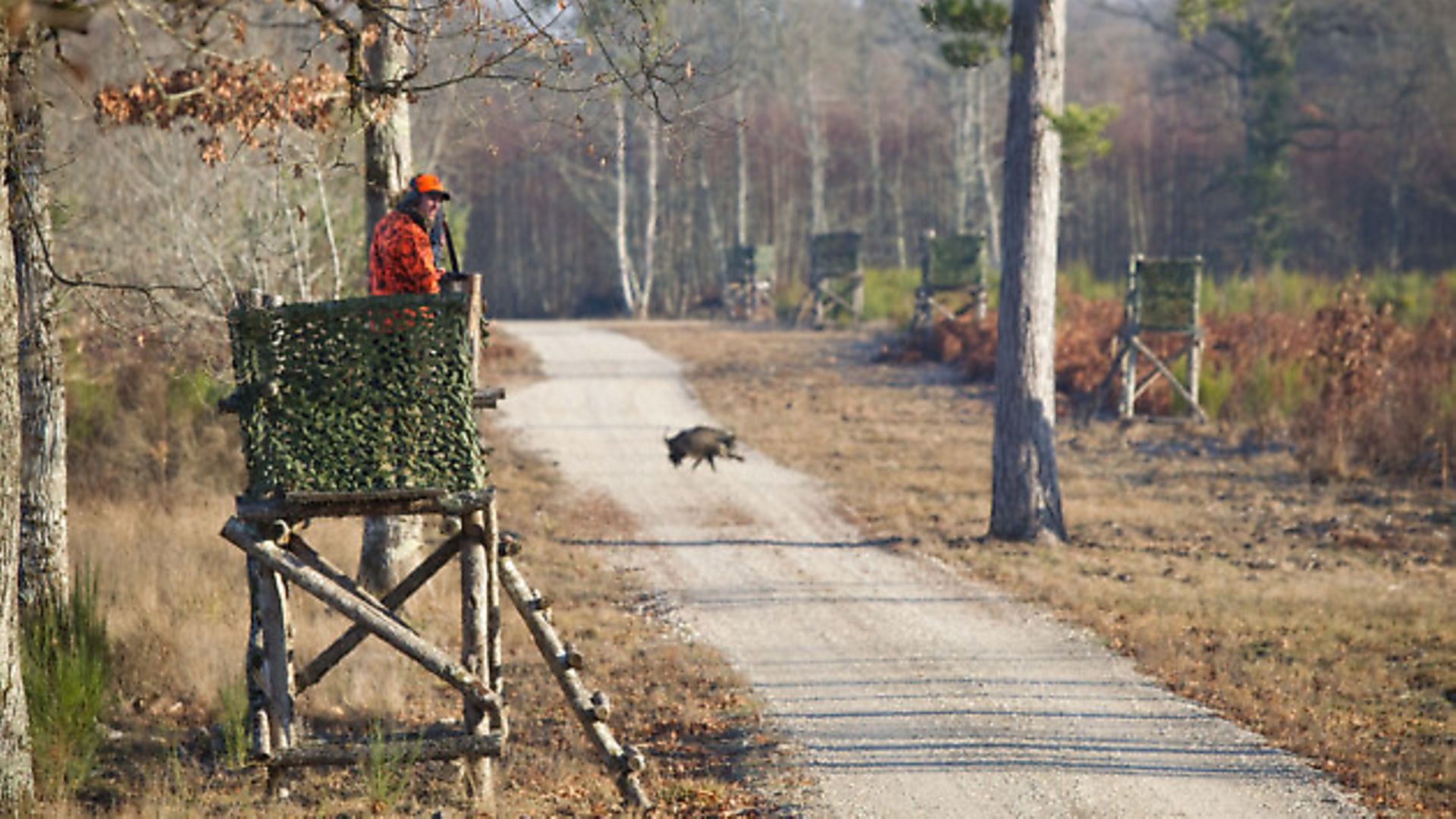 credit: Archant
credit: Archant
(Scroll down to discover what kit Dom used on his hunting trip)
Hands up who’s watched at least one of the Wild Boar Fever films? Me too. Whatever you might think about high-volume large game hunting, the skill of the now legendary Franz Albrecht is something to behold. Anybody who has ever faced the challenge of making a clean, killing shot on a running boar knows just how difficult it is to make it look that easy.
I was definitely a driven boar sceptic when I first attended a hunt in Germany six years ago. And I was converted – lock, stock and smoking barrel – within an hour (and four pigs) of climbing into my high stand; a tough, clever quarry, a big adrenaline rush, challenging shooting and tradition – it really has the lot.
The opportunity to hunt on the ‘set’ of the latest Wild Boar Fever film was afforded us by Leica, Sauer and Hornady: Leica provided the excellent Magnus in its latest evolution as the optic of choice; Sauer was showcasing the 100, 101 and 404 rifles, including the very sexy new Synchro XT-C, while Hornady was offering the chance to field test the latest Full Boar ammunition that has been a big hit with hog hunters in the US and is gaining traction with European hunters thanks to its hard-hitting GMX lead-free bullets.
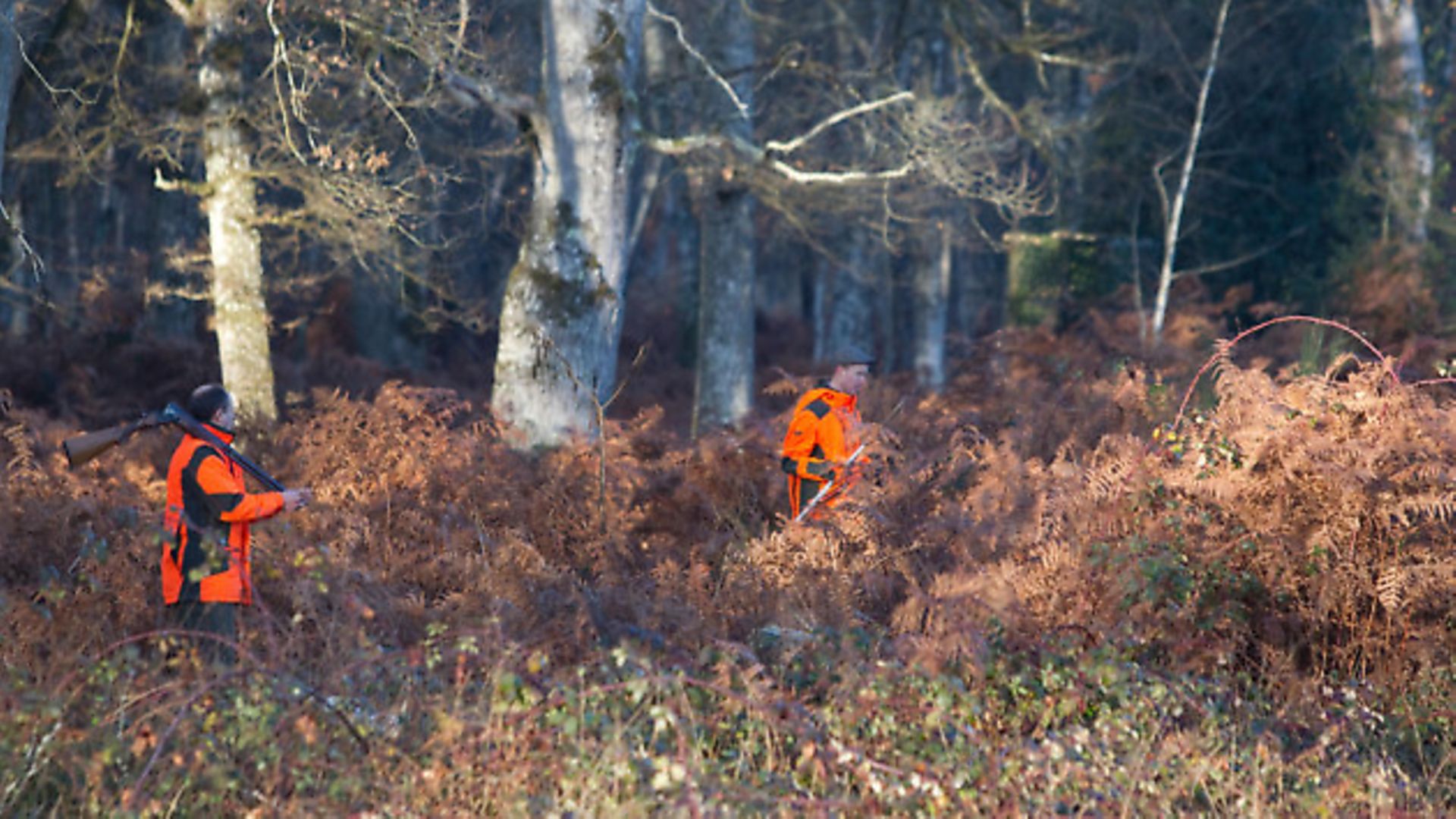 credit: Archant
credit: Archant
We begin with some technical talk from our hosts (see boxouts for more information) before our outfitter, Jean-Phillipe ‘JP’ Bourgneuf takes the stage to talk us through the hunting. He has a full-size mounted boar on a table for demo purposes and tells us where he likes the shot placement. It is higher and further forward than you might think. “If you go for a classic heart shot then you might risk hitting too low or too far back to stop the animal. We don’t worry about the meat damage; we want to kill the animal cleanly and a hit to the shoulder, neck or spine is preferable.”
While some are lucky enough to regularly participate in driven hunts, for me, this is usually a once-a-year trip and it is easy for the skills to get a little rusty. Fortunately, there is a running boar range just outside the lodge, along with a large box of Hornady’s finest and a selection of rifles. Time to put theory into practice.
There is no ‘lefty’ model available among the test rifles on this trip but a 404 Synchro XT is the next best option. The ambidextrous thumbhole stock not only fits me well, but the pistol grip allows me firm control with my left hand while allowing my weaker right hand to rack the bolt. That said, I am aware that a super-fast follow-up shot is going to be a challenge and I practise hard to up my speed without compromising on technique, aided by JP’s expert advice.
After getting our eye in at 25 yards, and realising I was slightly overleading, we head back to 50 yards and have plenty of opportunity to hone our swing and then analyse our results until we are happy. Finally it is time to double check zero from the bench and head out to hunt.
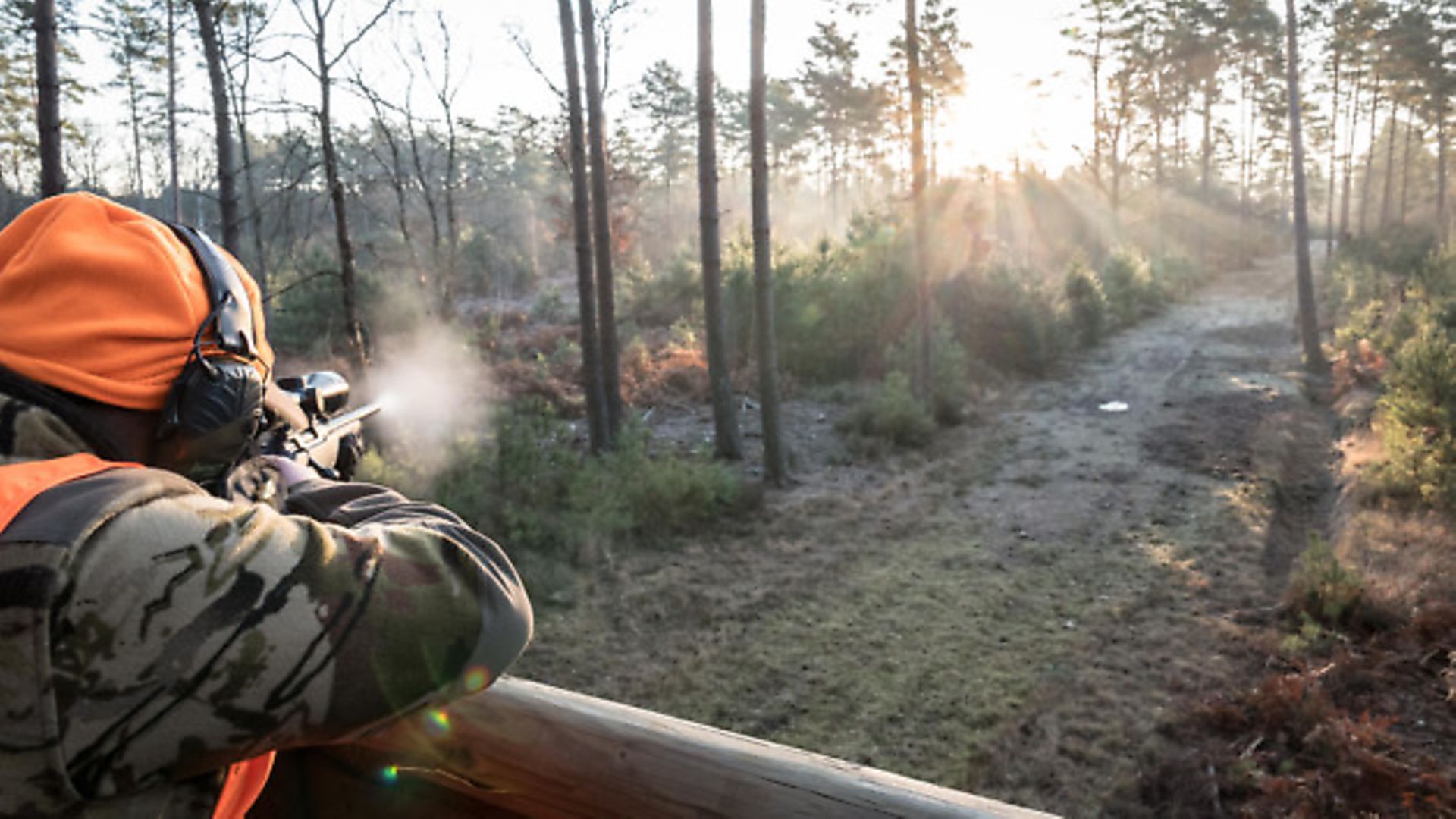 credit: Archant
credit: Archant
Our first outing is to a high seat in the watery afternoon sunshine. The logic suggests that the pigs will emerge from cover later, as the sun slides below the horizon. But the movement of vehicles and hunters to various points around the estate appears to have got at least some of them on the move.
We see a big sounder trot across the track on the right side of our high seat, some 200 yards distant. No chance of a shot, but it is wonderful to see large numbers of pigs nearby.
We hear animals moving in front, invisible in heavy cover, but enough to get the pulse rising and make me realise that the logistics of shooting will not be easy. There’s me, photographer Charlie, and my guide, Alice, crammed onto the small bench seat. Getting space to mount and move the rifle is not straightforward and we rehearse a little ‘ballet’ in preparation. And it’s a good job, too.
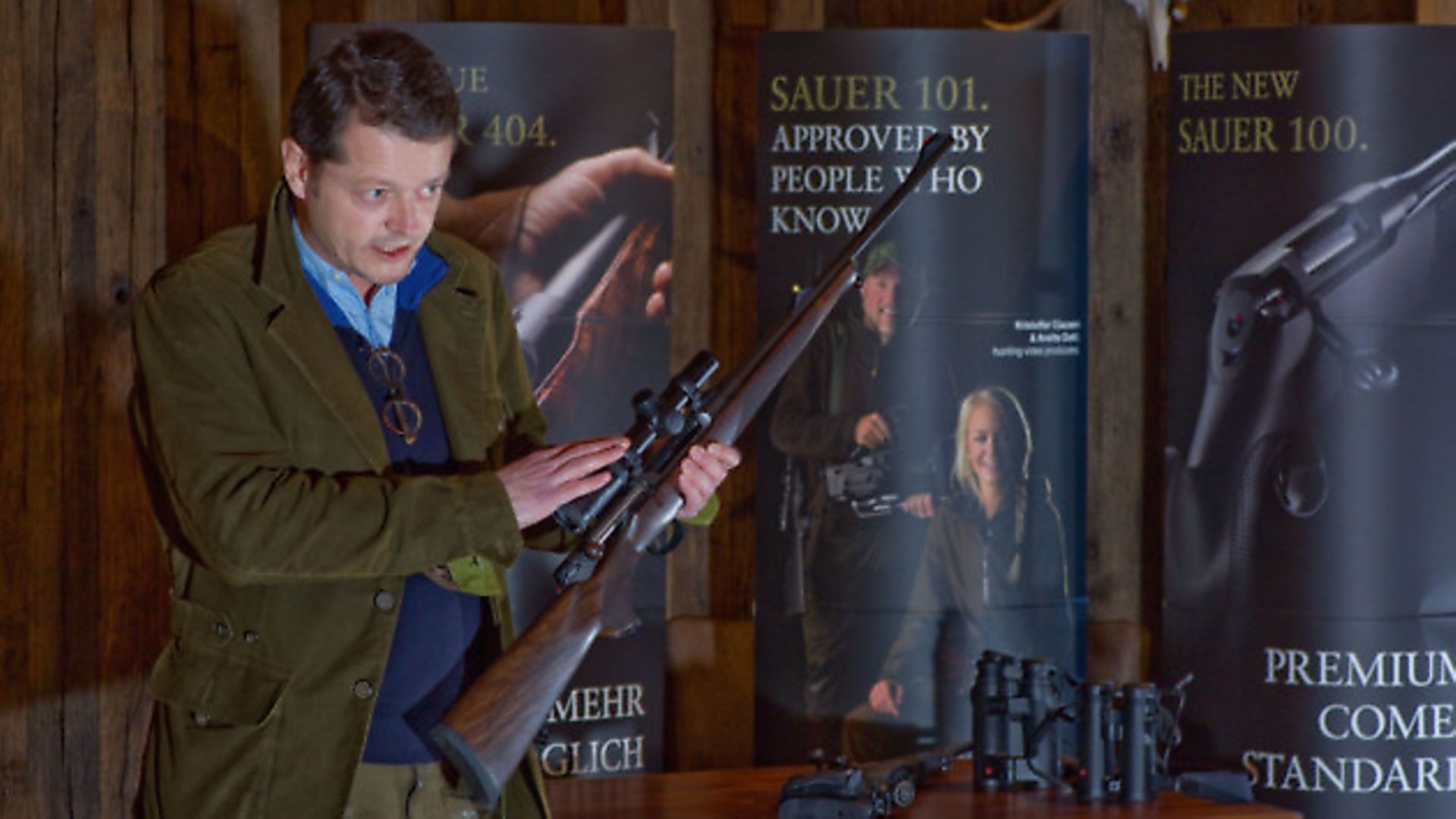 credit: Archant
credit: Archant
Alice has heard pigs in front but thinks that they will cross over on the right. We agree that I will wait until she confirms that the animal is the right one to take before I shoot. While I am relatively confident in my ability to spot a tusker, I don’t want to shoot a big sow in error.
That is a big no-no on all boar shoots but especially here. The area covers thousands of acres but, like many large estates in France, is fenced. The animals are wild and the populations are not supplemented or supported in any way so shooting a big sow might ‘cost’ 20-plus young over the next few years. So I will be erring on the side of caution.
There are lots of animals crossing, a big sow and plenty of little ‘uns. I wait, and wait, trying to make a clear ID when a mud-spattered beast suddenly emerges. “That’s a dirty one!” whispers Charlie. “Yes, shoot the muddy one,” adds Alice. The animal is trotting towards cover and is covering another animal behind. He speeds up just before the treeline, coming clear, and I squeeze off a round that drops him in his tracks. I reload as the boar struggles to his feet and I put in a second round to be sure. He crashes down and doesn’t move again.
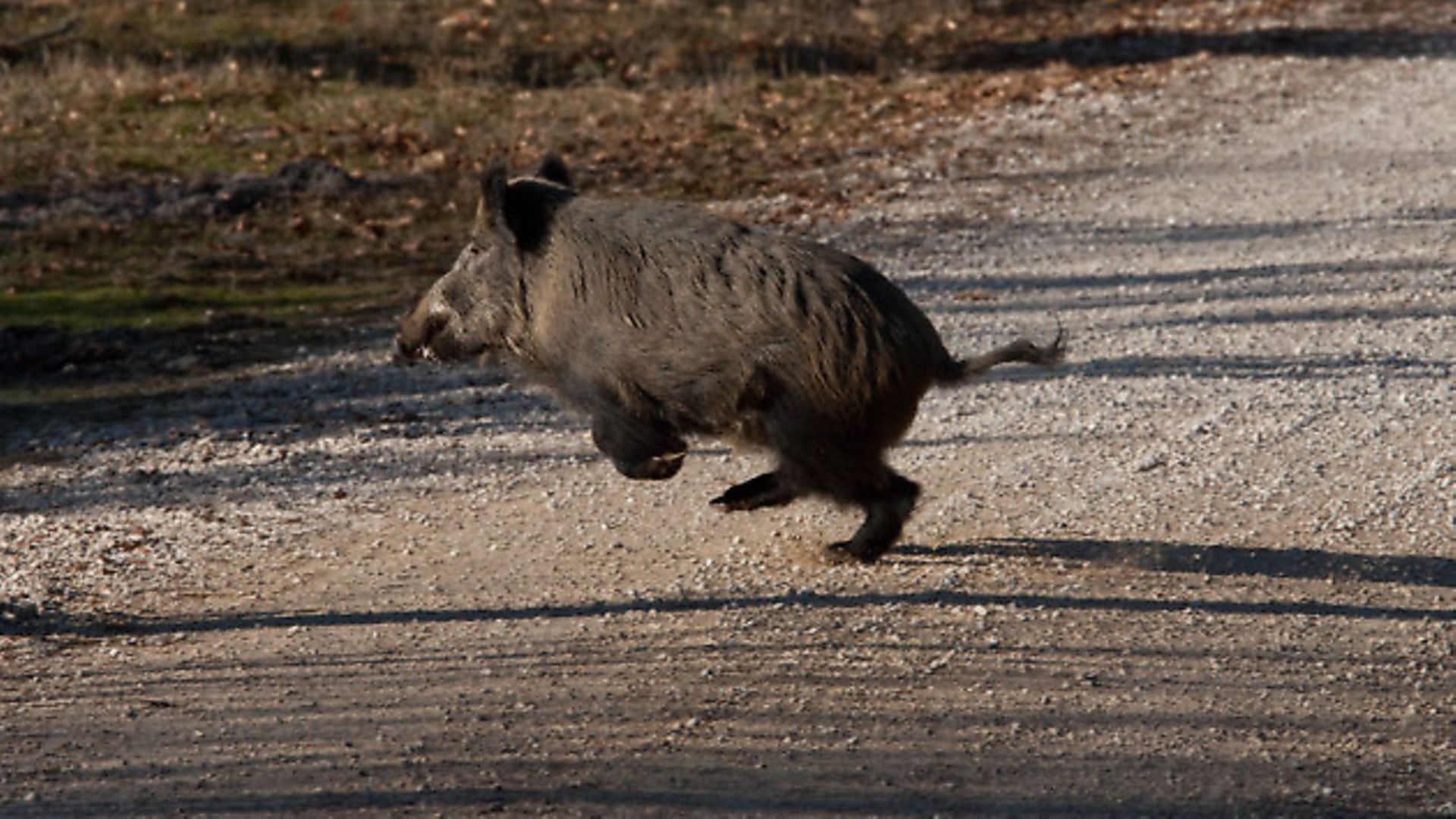 credit: Archant
credit: Archant
We see plenty more animals and I have a chance at a running boar which I miss cleanly, aiming rather than swinging through. We head over to check the ground and make certain that the animal is not hit and decide to call it a night and retrieve the keiler while there is still time for photos. He is a fine beast – the best part of 100kg – and a perfect start to our hunting trip.
After a great night sharing our experiences and sampling some magnificent local cuisine we rise early and eager. Our driven hunt starts in a clear, cold dawn. It is a stunning morning: a layer of frost crisping the leaves, the sky a cloudless blue, the sunshine promising a suggestion of warmth to ease chilled fingers and toes.
My stand is on the edge of a cover block with a gravel track running behind me. I won’t have Alice’s expert eyes to validate my quarry identification and, to make matters worse, the rising sun is directly in my eyes on the left, where hunting manager Olivier suggests most boar will look to cross. But I have a wide field of fire with only my right side restricted until the boar cross the road.
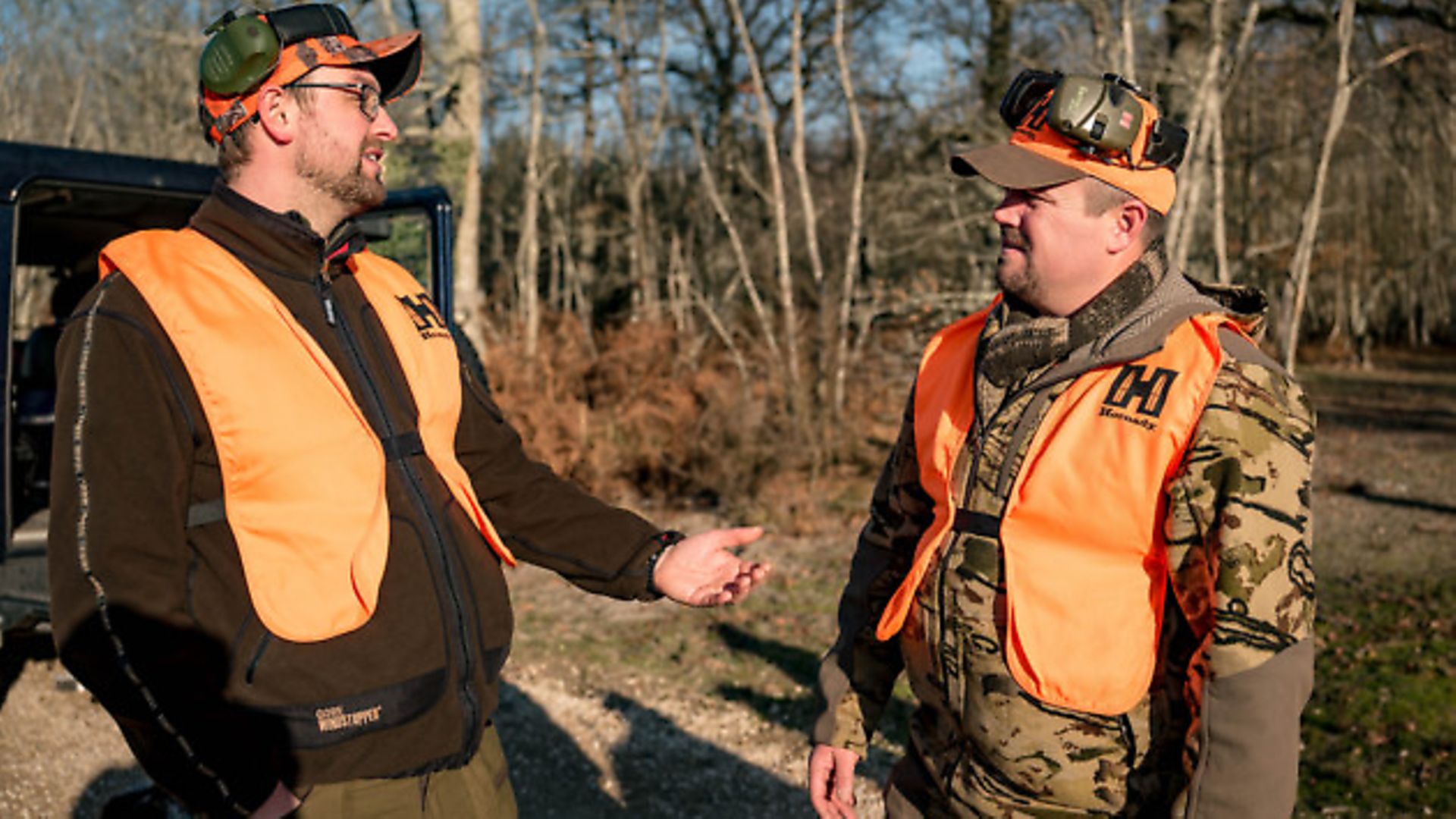 credit: Archant
credit: Archant
I load the 404, chamber a round and lay out spare ammunition where it is ready to hand. I hear pigs crashing through the cover and start seeing animals almost straight away – including a decent keiler passing on the right that I just stare at and don’t even shoulder the rifle!
Several groups pass on the left, silhouetted by the bright sun but I am simply not confident or fast enough to identify a suitable target before they make the cover of the forest again.
More and more pigs pass on the left side but slowly the sun creeps higher and starts to help, rather than hinder my view along the track. And as yet another group passes, a trio of medium-sized beasts emerges to follow and I am confident enough to take the hindmost, tumbling him over at the edge of the forest.
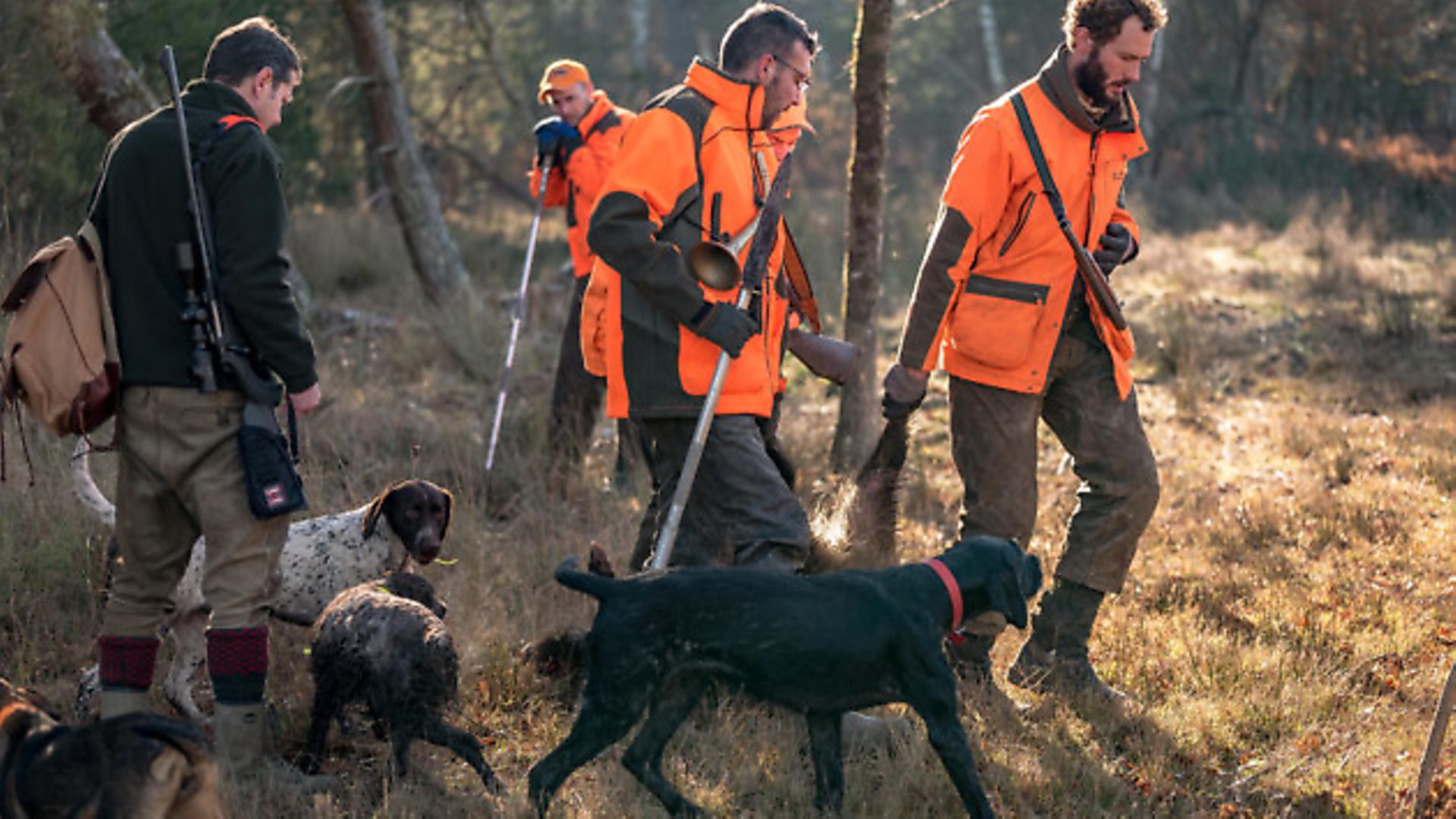 credit: Archant
credit: Archant
I get one more opportunity late on in the drive: a male on his own, cutting across in front of me, presenting an easy, clear shot except that I am not permitted to shoot into the drive. He suddenly drops a gear and accelerates hard across the track and as soon as he is in a safe position I swing through and take the shot. He doesn’t seem to slow but I am confident of the hit.
After three long horn blasts signal the end of the drive I climb down and inform the dog team of the second animal. It doesn’t take long to find a blood trail and the beaters find the animal dead as they head across towards the next drive.
It is always hard to leave a potentially wounded animal in somebody else’s hands but on driven hunts, the beaters and dog teams are expert at following up – they have specialist blood tracking hounds and also know what to do when confronted with a potentially dangerous situation with a wounded animal (all of the beaters here carry heavy spears, shotguns with slugs, or rifles). They communicate via radio and the organisers always let the hunters know as soon as a beast is successfully tracked or recovered.
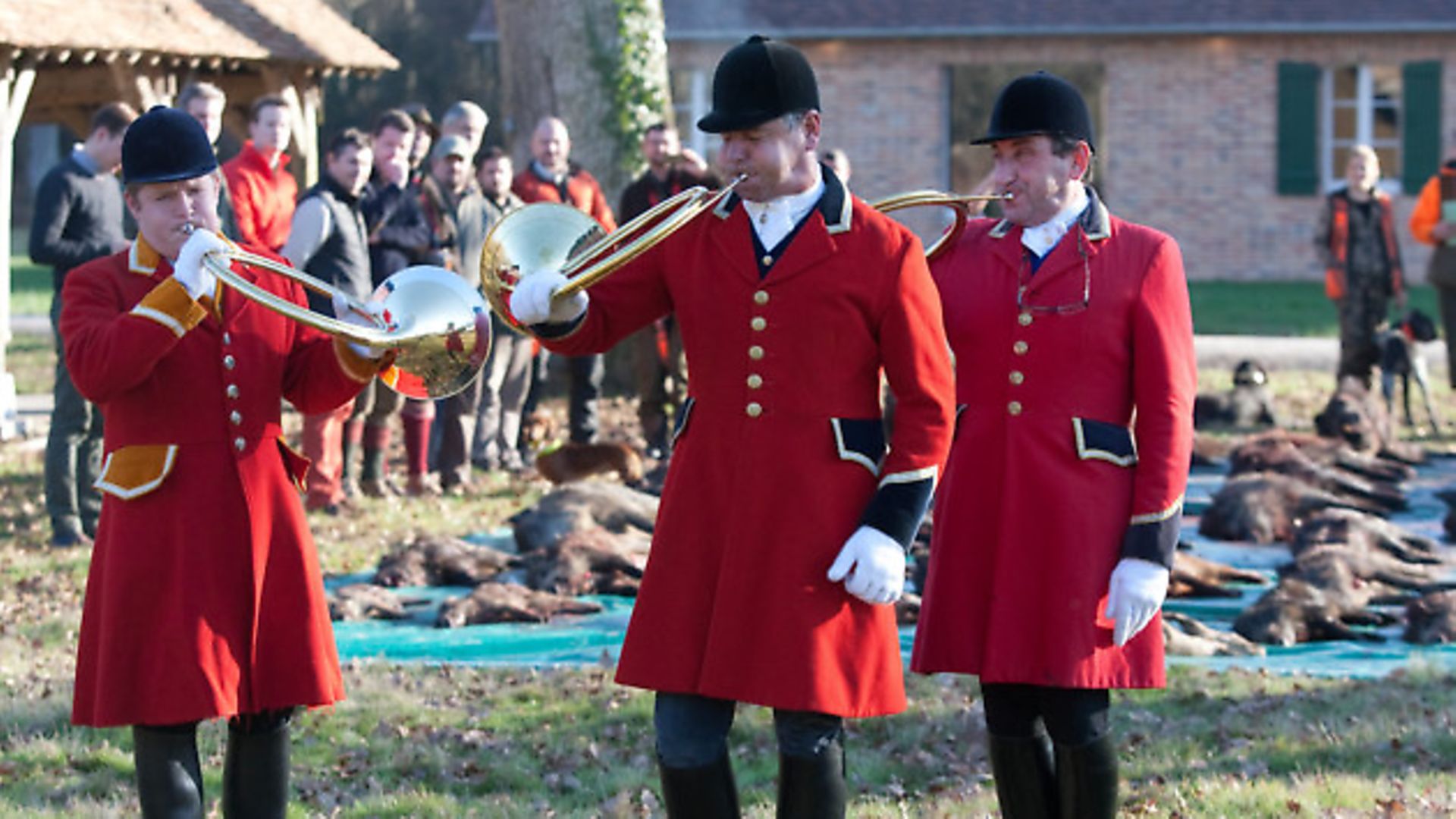 credit: Archant
credit: Archant
We load up into the Land Rovers and head off to the second and final drive of the day. This time I am positioned right at the edge of the drive and have beaters pulling in the land to my right as well as another phalanx coming from ahead, limiting my field of fire a little. But after the frenetic action of the last drive I am more than happy to watch the world go by and listen to the distant rumble of gunshots and the ‘halloos’ and horn calls of the beaters.
I’m drifting into a daydream about vintage Range Rovers when something catches my eye. There is the merest suggestion of movement through the trees behind me, on the very edge of the lake. I’m sure Olivier mentioned that the wily old boar sometimes hug the shore of the lake to try to sneak out of the drive unnoticed. And sure enough, it is a boar, all alone, tiptoeing its way soundlessly through heavy brash 120 yards away.
I immediately wind the Magnus around to its 6.3x maximum magnification and lay the rifle along the side bar of the stand for stability. This won’t be a standing, swinging shot – if a shot is even feasible.
I can barely see the pig through the trees but what I can see ups my pulse rate: matted muddy fur and tusks. It’s a keiler alright. I track the animal as it creeps along but there is no clear shot due to the density of the woods.
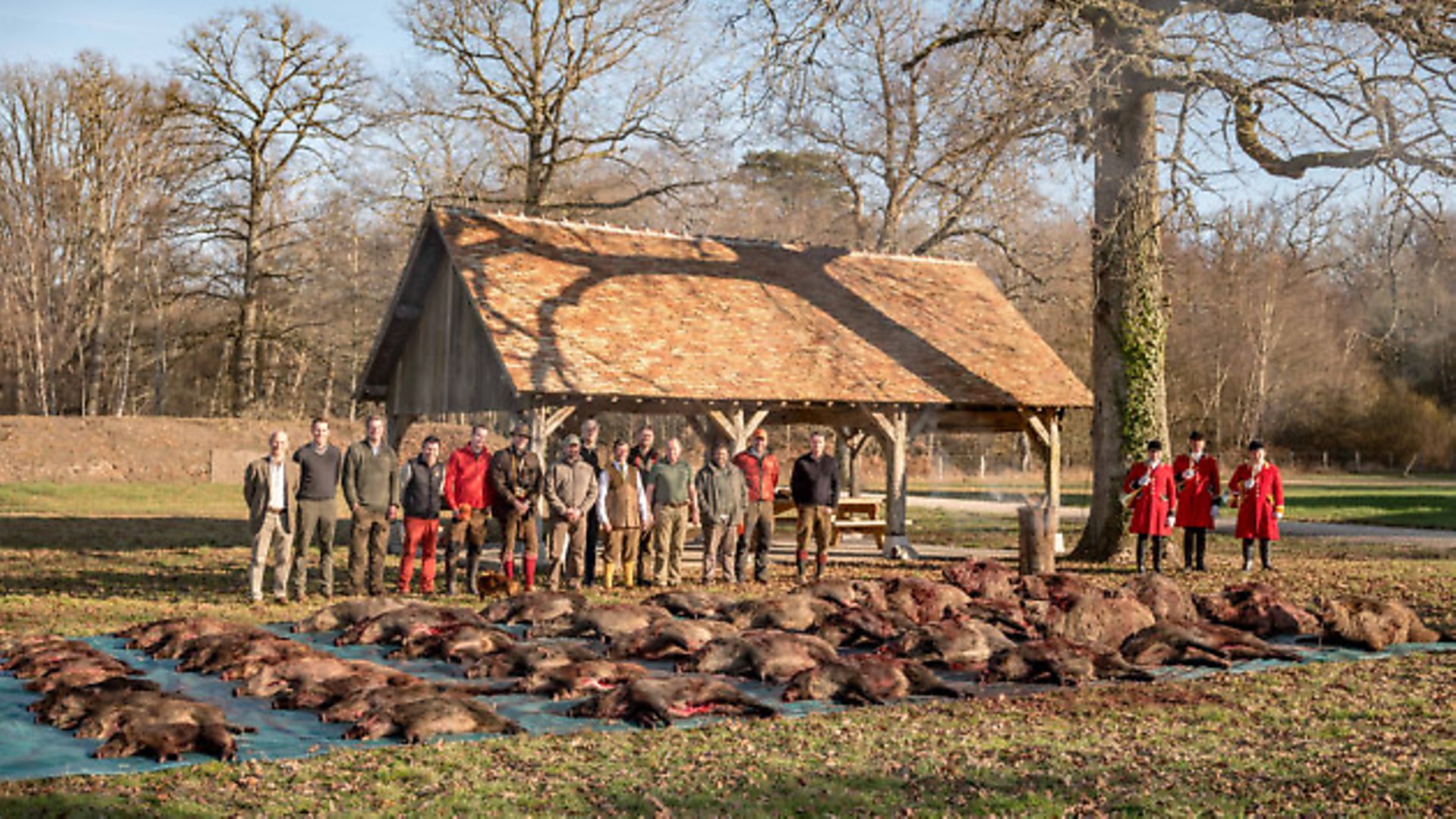 credit: Archant
credit: Archant
Ahead is a straggle of silver birch that appears to be less dense. If I am lucky, there might be an opportunity. I find the biggest gap among the trunks and wait. A muddy snout and yellow tusks edge into view. Then an ear. Then a shoulder. I squeeze off a round and see the big boar react to the shot and surge forwards, but the cover grows thick again and I lose sight of him.
All I can do is listen to a crash… and then a massive splash. Then nothing. No pig appears from the cover. Just a ripple spreading ever outwards across the lake. The boar is down, I’m certain, but how far into the water did it go? How deep is the lake?
The remaining hour of the drive is relatively uneventful. I see a couple of decent tuskers off near my neighbour but he can’t get a shot. A roe doe creeps serenely and calmly through the beating line and back into the forest. Then, at last, a triple horn signals the end of the hunt. I head down, keeping my rifle loaded just in case, and make my way down to the edge of the lake. There, on a little island a few yards from the shore, lies my boar. Stone dead, lodged up against a tree trunk. I paddle out to retrieve it and drag it to the shore before marking its location with my blaze orange cap for the game cart to collect.
We reconvene at the hunting lodge for the ‘tableau’, accompanied by strident hunting horns to honour our quarry. It is clear that there has been much success – one of our German colleagues tells us of his own ‘Wild Boar Fever’ moment, tumbling over two fast-running boar with consecutive shots. It is clear from his face that he will remember it forever. Over 40 boar have been shot between a dozen Guns, incuding plenty of tuskers, and everybody has seen a lot of animals.
At its best, driven boar shooting is, in my humble opinion, Europe’s premier big game hunt. And the action we enjoyed here in the Sologne is quite simply as good as it gets, from the pleasure of sampling the latest premium hunting gear in real-world conditions, to the slick, professional organisation of JP’s team. I’ll be taking home memories to last a lifetime and a few tusks, too. And I’m already trying to work out an excuse to return!
KIT
Leica Magnus i 1-6.3x24
One thing you really need when shooting close, fast targets is a wide field of view, and in this scope, Leica have set a new benchmarck for the sector. With a massive 44m FoV at 100m it allows you excellent peripheral vision aiding safety, and rapid target selection.
Leica has refined the reticle across the larger Magnus models, but has kept the larger red dot for this scope to allow faster target acquisition on running animals.
Feedback from hunters about the previous model suggested the illumination controls were too easy to accidentally turn on while the rifle was being transported so Leica have redesigned the unit with a more positive on/off function and easier access to the battery compartment.
I also used this scope in low light conditions and for making a long range shot from the high stand. It’s 90?? Percent light transmission and 6.3x zoom makes it a surprisingly adroit all rounder.
uk.leica-camera.com
Sauer 404There were plenty of rifles to chose from on the event – including the latest rang-topping 404 XT-C… the C being for carbonfibre. A stunning looking bit of kit that we will be doing a full range test on soon.
The adjustability – from comb height to length of pull to trigger weight and even the angle of the trigger blade – combines to deliver a rifle that feels like an extension of your arm.
Factor in the vastly improved take-down ability over the previous 202 and not only does the 404 offer the ability to swap effortlessly between calibres but it is also brilliant for those that wish to travel discreetly with their firearm.
www.sauer.de
Hornady Full Boar
Match grade accuracy might not be top of the wish list for a driven hunter but heavy hitting, great penetration and strong weight retention certainly are.
Full Boar ammunition from Hornady features hard hitting GMX bullet heads. The lead free copper alloy construction is monolithic, offering controlled expansion while retaining 95% of the weight. It also features crimping and pressure relieving grooves which work to reduce both bearing surface and fouling to aid in consistent reloads. Expanding to 1.5 times the original diameter and retaining 95% original weight means bullets routinely penetrate over 30” in gelatine tests, perfect for tough skinned wild boar.
www.hornady.com
You can do this:
From foot stalking to big driven days on exclusive estates, JPB Adventures can cater for your wild boar needs.
www.jpbadventures.com
For good value accommodation and top notch local cuisine, try the Auberge du Cheval Blanc in Yvoy-le-Marron
www.aubergeduchevalblanc.com